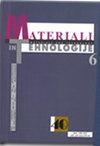掺入碳和氮对用 MePIIID 制备的 TiO2 薄膜光活性的影响
IF 0.8
4区 材料科学
Q4 MATERIALS SCIENCE, MULTIDISCIPLINARY
引用次数: 0
摘要
众所周知,二氧化钛是一种在紫外线照射下活化的光活性材料。它要么被用作光催化剂,要么在光照下表面能量降低后表现出超亲水性,用于自清洁或防雾表面。为了提高薄膜在太阳光照射下的反应活性,需要缩小带隙。文献中已有掺杂过渡金属或氮的报道。然而,将氮掺入生长中的薄膜是一个复杂得多的过程,目前还不完全清楚。TiO2 薄膜是在室温下,以 0-5 kV 的脉冲电压和 9 % 的占空比,通过金属等离子体浸入式离子注入和沉积法生产出来的,表面上看是无定形层。为了提高低气体流量比时的生长速度,还使用了辅助射频等离子源。通过调整入射离子束、溅射靶和基底之间的几何形状,使其与主离子能量和种类无关,从而实现了样品的可控沉积。采用传统的离子注入法将碳或氮离子注入表面以下,以实现带隙工程。随后对所得薄膜的光学特性、化学计量、结构特性、表面形貌和光活性进行了研究。本文章由计算机程序翻译,如有差异,请以英文原文为准。
INFLUENCE OF DOPING WITH CARBON AND NITROGEN ON THE PHOTOACTIVITY OF TiO2 THIN FILMS OBTAINED WITH MePIIID
Titanium dioxide is well known as a photoactive material activated under ultraviolet irradiation. It is either employed as a photocatalyst or it exhibits superhydrophilic behavior after obtaining reduced surface energy under illumination used for self-cleaning or anti-fogging surfaces. For increasing the reactivity of thin films under solar illumination, a reduced band gap is desired. Doping with transition metals or nitrogen has been reported in the literature. However, the incorporation of nitrogen into a growing film is a much more complex process that is presently not completely understood. TiO2 thin layers were produced by metal plasma immersion ion implantation and deposition at room temperature at a pulse voltage of 0–5 kV and a duty cycle of 9 % for an apparently amorphous layer. An auxiliary rf plasma source was employed to increase the growth rate at low gas flow ratios. By adjusting the geometry between the incident ion beam, sputter target and substrate independently of the primary ion energy and species, a controlled deposition of samples was possible. Conventional ion implantation was employed to implant either carbon or nitrogen ions below the surface for bandgap engineering. The resulting thin films were subsequently investigated for optical properties, stoichiometry, structural properties, surface topography and photoactivity.
求助全文
通过发布文献求助,成功后即可免费获取论文全文。
去求助
来源期刊

Materiali in tehnologije
工程技术-材料科学:综合
CiteScore
1.30
自引率
0.00%
发文量
73
审稿时长
4-8 weeks
期刊介绍:
The journal MATERIALI IN TEHNOLOGIJE/MATERIALS AND TECHNOLOGY is a scientific journal, devoted to original papers and review scientific papers concerned with the areas of fundamental and applied science and technology. Topics of particular interest include metallic materials, inorganic materials, polymers, vacuum technique and lately nanomaterials.
 求助内容:
求助内容: 应助结果提醒方式:
应助结果提醒方式:


